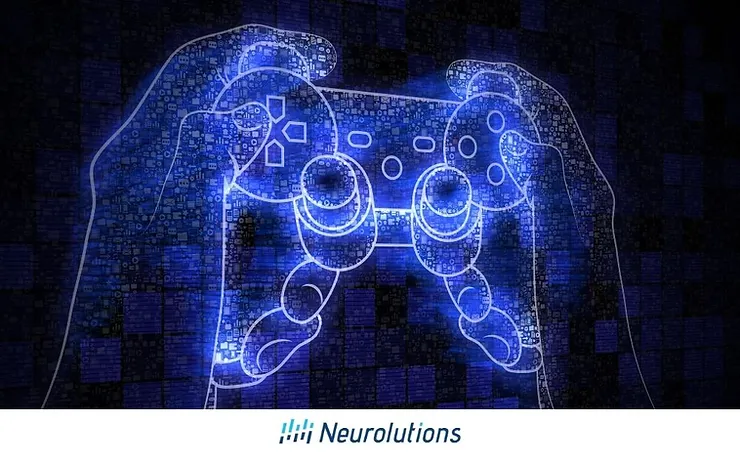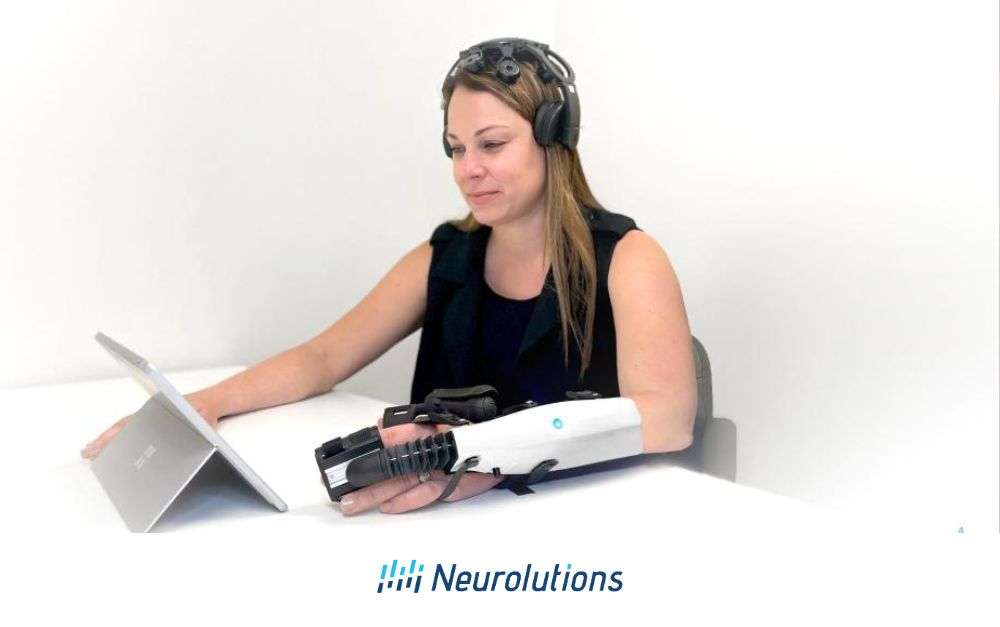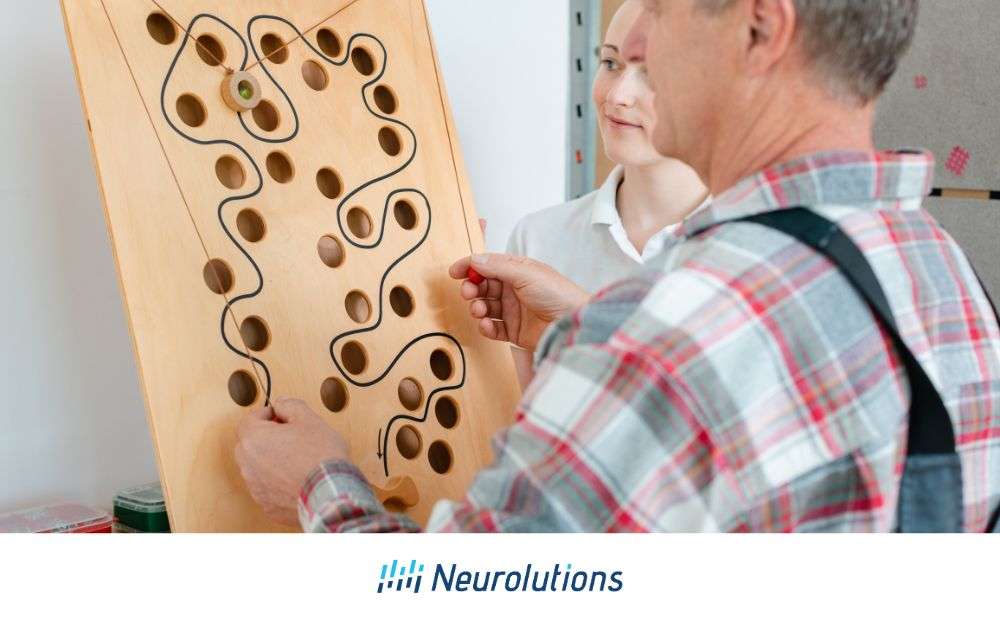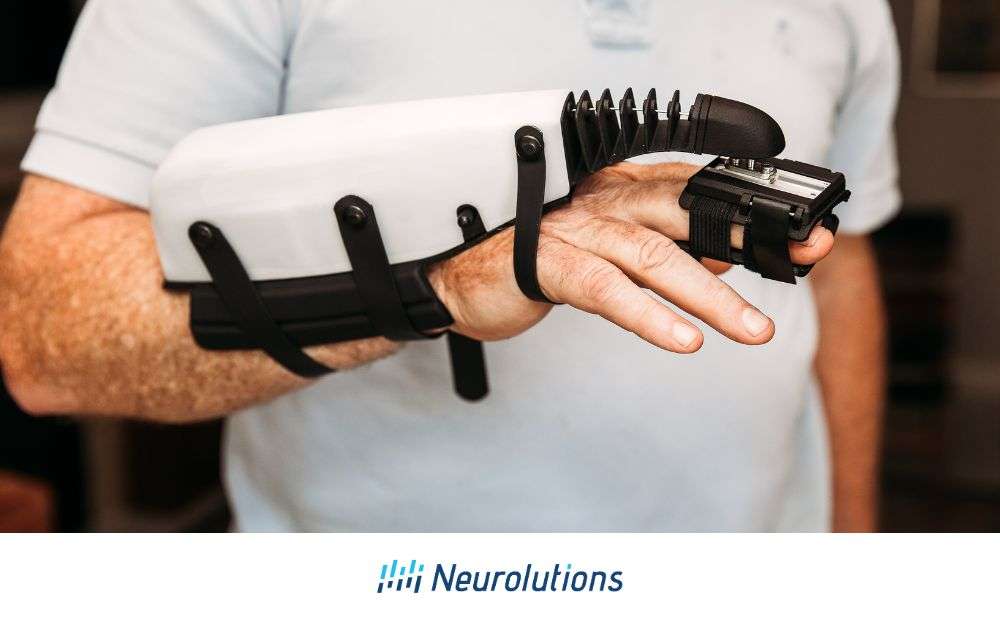One-sided paralysis and weakness experienced by stroke survivors can necessitate occupational or physical therapy services to regain the lost mobility in the arm, hand, and fingers. Even if paralysis subsides, restricted motion, coordination impairments, or shakiness in the upper extremity may remain. Playing accessible video games geared toward people with lost upper extremity dexterity can promote recovery of the diminished arm, hand, and finger movement capacity. It can also support the recovery of eye-hand coordination.
Forty-three percent of all US adults play video games, while adults under age 50 play twice as many video games as adults over age 50 (1). Additionally, only 42% of gamers feel that developers are fully dedicated in accommodating gamers with mental and physical disabilities (2). To combat this, there are now a number of accessible video games that have been developed specifically for disabled or senior aged individuals.
Accessible video games typically enable the user to adjust the speed of the game, loudness, and level of motor skill necessary to use the keyboard or joystick. Like other video games, accessible video games can be played on a computer or mobile device.
The following is a discussion of the specific ways accessible gaming can benefit stroke survivors, describing some of the different types of games used in boosting stroke recovery.
Gaming After Stroke – What You Need to Consider
Video games can be incorporated into occupational therapy or other supportive care as a way to improve the motor skills needed to perform Activities of Daily Living (ADLs). Since self-feeding, self-bathing, and other ADLs require hand and finger dexterity, playing accessible video games can be used as a component of a motor rehabilitation plan.
Video gaming can also enable improved cognition and social interaction. For example, playing a game involving more than one player, such as an interactive card game, may improve overall mood through involvement in an enjoyable activity while fostering relationships.
It should be noted that senior-aged adults are the least likely demographic to utilize technological devices and/or play video games. Thus, learning to play a video game may not be as intuitive for a senior compared to a younger person. Therefore, gaming may require patience, careful instruction, and repetition of instructions on the part of the caregiver.
Three Benefits of Gaming for Stroke Survivors
There are several benefits to playing video games for stroke survivors, but the main three are cognitive rehabilitation, motor rehabilitation, and emotional and social benefits.
1) Cognitive Rehabilitation:
A wide range of cognitive skills are required to play video games. From following instructions and problem-solving to boosting short-term memory and other aspects, the video game player is challenged on a mental level. Research on video gaming’s impact on cognition is complex and varies depending on factors like game genres, training intensity, and specific cognitive domains. Conclusions on this often yield contradictory results, making it challenging to provide a clear answer; some studies say they can be good for our brains, but it’s not that simple. It depends on the type of game, the time spent playing a game, and what component of our thinking that’s being addressed referenced (3).
2) Motor Rehabilitation:
After a stroke, the muscles that receive “signals” from the brain to move often become paralyzed or weakened due to nerve cell destruction at the site of the brain injury. As previously noted, the nerve signaling impairment typically occurs on either the left or right side of the body, depending upon which hemisphere of the brain was injured. As paralysis and weakness in the muscles subsides, spasticity in making normal movements such as lifting an arm typically occurs. According to “Mobile Game-based Virtual Reality Program for Upper Extremity Stroke Rehabilitation” led by Yoon-Hee Choi and Nam-Jong Paik in combination with several supporting studies, playing video games has been found to promote upper extremity motor rehabilitation (4). Additionally, it promotes eye-hand coordination, which is essential to perform most ADLs such as face-washing and cooking. Playing a game that requires moving a joystick is particularly useful for boosting eye-hand coordination, as well as improving hand and finger strength.
3) Emotional and Social Benefits:
Transmission of mood-affecting brain chemicals is negatively impacted by a brain injury such as a stroke. Consequently, stroke survivors often experience depression and heightened anxiety (5). Playing a video game can distract stroke survivors from their worsened emotional mood. Meanwhile, stroke survivors often experience increased social isolation due to not being able to attend social activities or drive their cars to visit friends. Accessible gaming typically allows stroke survivors to play against a computer, play with another “in-person” player, or play online with other people. In this way, playing video games can enable isolated stroke survivors to engage in social interactions, which may lessen feelings of depression and anxiety.
Accessibility in Video Games for Stroke Survivors
Accessibility in gaming for individuals who have had a stroke and experience a variety of functional impairments is an important consideration to ensure that games are inclusive and also enjoyed. Various categories of accessibility features and considerations are employed to make games more accessible to those living with disabilities, such as stroke. Here are some of the key categories applicable to stroke survivors that may require accessible gaming:
Visual Accessibility
- Text and font size options: Allowers gamers with visual impairments to adjust the text size and font type
- Color and high-contrast options: Certain gaming software provide options to adjust the degree of contrast of background against foreground objects to the gamer’s preference. The ability to change color combinations may also assist the gamer to visually distinguish certain features of the game for enhanced accuracy and overall experience.
Auditory Accessibility
- Closed captions, subtitles and visual cues: Providing closed captions and subtitles allows a gamer with hearing impairments the ability to follow allow with game dialogue if they have difficulty differentiating sound and spoken language.
- Sound and audio options: Sound and audio features can be adjustments to improve the individual experience for enhanced attention and hearing while gaming. Vibration may also be intensified or reduced depending on the purpose it may serve for the specific needs of the individual.
Motor Accessibility
- Adaptive gaming control systems: To allow for independent user interaction and decision making during the game, adaptive controllers are now market available. Joysticks, large buttons, one-hand controllers, voice activation, trigger buttons, sip/puff headsets, tracker activation, head switches, and foot pedals are just a few examples of what can be used for an individual that has had a stroke and now has difficulty with motor function.
- Remappable controls: The ability to customize choice of control input can be very helpful for those that may have a limitation with a specific finger, thumb or wrist so they can engage with the game while taking advantage of their strengths / abilities.
- Adjustable input timing: Offers the ability to speed up or slow down features of the game to accommodate those with motor impairments. This feature can be highly useful for those with processing delays related to vision or cognition as well.
Cognitive Accessibility
- Difficulty level adjustments: The ability to adjust difficulty level (i.e. beginner, easy, intermediate, difficulty, advanced, expert) is helpful both survivors of stroke and the general population. This can help them build upon their skills without starting at a level of challenge that is too difficult, causing frustration and possible discontinuation of the game.
- Simplified User Interface (UIs): Strategic design of the UI reduces cognitive load for a streamlined gaming experience.
- Tutorials: Clear tutorials assists the gamer with understanding directions and objectives of the game.
- Exploration of personal creativity: Developers often incorporate user-generated content in the gameplay to cultivate personal expression and creativity. Among the types of user-generated content in games, popular examples are avatar customization, custom maps/home/building development, and skins. This type of content commonly appears in games like MINECRAFTTM or FortniteTM. User generated content in video gaming, whether images, text, audio, or video, may boost creativity and cognitive ability (6).
Communication Accessibility
- Voice-to-text/speak-to-text and voice activation: Use of any of these communication features may provide those with motor impairments of the limbs a unique gaming experience and may also enhance communication skills in the process.
Accessibility for the Older Adult
- Board games converted to video games: Video games based on board games are familiar to the older generation of stroke survivors. Fostering fine motor skills and cognitive ability, they may include games such as Solitaire, Scrabble, jigsaw, or crossword puzzles.
Choosing the Right Video Game for Stroke Rehabilitation and Video Game Resources
When selecting a video game to incorporate within a stroke rehabilitation program or simply to use during the process of returning to one’s valued daily activity, it is important to consider several factors to make sure the game is enjoyable and also an effective choice.
To ensure the game is suitable for the needs of the stroke survivor and does not cause frustration, anxiety, boredom or pessimism about future recovery potential, first take into account the gamer’s strengths and limitations. In addition to their physical, sensory, perceptual, social, and cognitive abilities, look carefully at the whole person. This includes taking an inventory of their personal interests, patience, safety precautions, features of their environment, self confidence and awareness, and support system.
An interview with the gamer should always be utilized prior to game selection. Gather information on the stroke survivors’ likes, dislikes, what games they used prior to their stroke, and what they are willing to try now that their functionality has changed. Take all of this into careful consideration prior to choosing the game.
After holistic assessment and interview with the gamer, game selection can be initiated. Examples of important accessible video game features may include capacity for (7):
- Closed captioning
- Audio narration
- Screen magnification
- High contrast mode
- Text-to-speech
- Customizable game speeds
- Difficulty level customization
- Adaptive features on input controller systems and hardware, such as button or lever touch sensitivity adjustment, one-handed controllers, or eye-blink controls
While not every stroke survivor involved in accessible gaming needs all of these features, video games that do have these features enable more inclusivity of individuals with residual symptoms following stroke to play that game.
Take the time to adjust modes and customize in an effort to begin at the right starting point for re-entry into the gaming world or if starting gaming for the first time. Be prepared that it may take several trials over many days to get used to the game before settling on the right game and/or accessibility feature. When possible, try a variety of games in the rotation to gain perspective on advantages and disadvantages of each game. Once a game is selected, it may be wise to stick with this game for a period of time before adding a new game to work towards mastery of personal skills using accessibility features as well as get better at understanding the game.
Conclusion
Books on video games as well as accessible video games for stroke survivors can be found online. Additionally, video game suggestions are also included on the AARP website. Introducing at least one accessible video game to a stroke survivor’s post-stroke journey may reap a number of potential benefits, including improved motor skills, improved cognition, and lessened stroke-caused depression/anxiety.
References:
1. Pew Research Center (PRC). (September 17, 2018). 5 facts about Americans and video games. Webpage: https://www.pewresearch.org/short-reads/2018/09/17/5-facts-about-americans-and-video-games/
2. Gardner, Matt. “Why Games Are Still Letting Down People With Disabilities.” Forbes, Webpage: https://www.forbes.com/sites/mattgardner1/2021/12/03/why-games-are-still-letting-down-people-with-disabilities/
3. Kühn S, Gallinat J, and Mascherek A. (2019). Effects of computer gaming on cognition, brain structure, and function: A critical reflection on existing literature. Dialogues in Clinical Neuroscience 21(3): 319-330. Webpage: https://www.ncbi.nlm.nih.gov/pmc/articles/PMC6829166/
4. Choi YH, and Paik NJ. (2018). Mobile Game-based Virtual Reality Program for Upper Extremity Stroke Rehabilitation. Journal of Visualized Experiments 8(133): 56241. Webpage: https://www.ncbi.nlm.nih.gov/pmc/articles/PMC5931529/#:~:text=The%20findings%20from%20the%20study,generally%20satisfied%20with%20the%20program.
5. Li W, Xiao WM, Chen YK, et al. (2019). Anxiety in Patients With Acute Ischemic Stroke: Risk Factors and Effects on Functional Status. Frontiers in Psychiatry 10: 257. Webpage: https://www.ncbi.nlm.nih.gov/pmc/articles/PMC6478797/
6. Khalil R, Godde B, and Karim AA. (2019). The Link Between Creativity, Cognition, and Creative Drives and Underlying Neural Mechanisms. Frontiers in Neural Circuits 13:18. Webpage: https://www.ncbi.nlm.nih.gov/pmc/articles/PMC6440443/
7. World Institute on Disability. A Guide to Video Game Accessibility. Webpage: https://wid.org/a-guide-to-video-game-accessibility/




